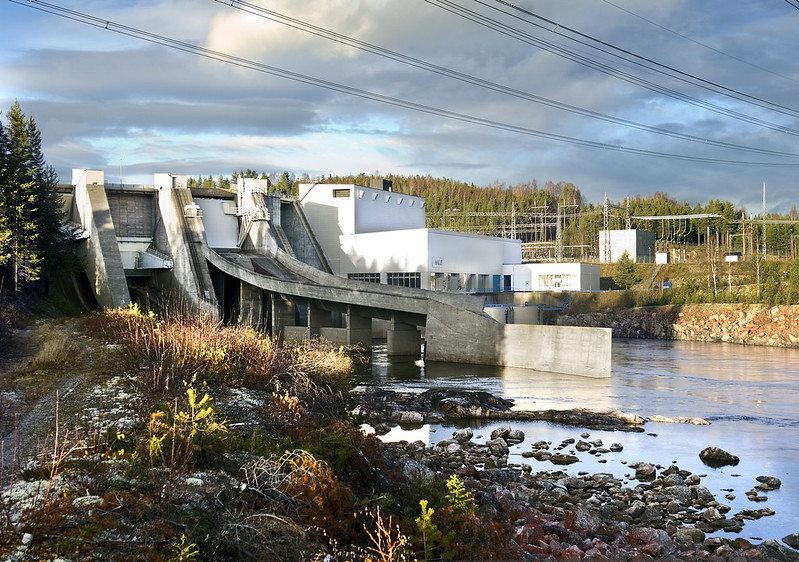Hydroelectric Powerplants
Source: Bosse Johansson
“Tuggen hydro power plant” by Vattenfall is licensed under CC BY-NC-ND 2.0
Hydroelectric energy, sometimes called hydroelectric power or hydroelectricity, is a form of energy that harnesses the power of water in motion to generate electricity.
Most hydroelectricity power plants work by having a reservoir, a natural or man-made lake, a gate to control how much water leaves the reservoir, and a place where the water goes after flowing downward. The flowing water can be used to turn the blades of a turbine to generate electricity.
The three different types of hydroelectric power plants are an impoundment facility, a diversion facility, and a pumped-storage facility.
In an impoundment facility, a dam is used to control the flow of water that’s stored, and when more energy is needed, more water is released. Once the water is released it flows through a turbine and spins the blades which power a generator.
In a diversion facility, there is not a dam, instead, it uses canals to channel flowing river water toward the generator-powering turbines.
Lastly, the third type of powerplant is a pumped-storage facility. In a pumped-storage facility, the plant collects energy produced from solar, wind, and nuclear power and stores it for use in the future. It stores energy by moving water uphill, from a pool at the bottom of a hill, to a reservoir near the top. When electricity is needed, water in the reservoir at the top of the hill is released, and as the water flows back down to the lower reservoir, it turns a turbine to generate electricity.
RELATED ARTICLES:
https://www.eia.gov/energyexplained/hydropower/
https://www.nationalgeographic.org/encyclopedia/hydroelectric-energy/















